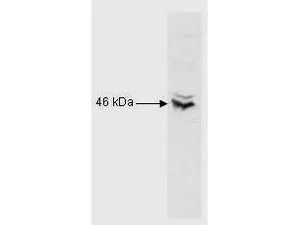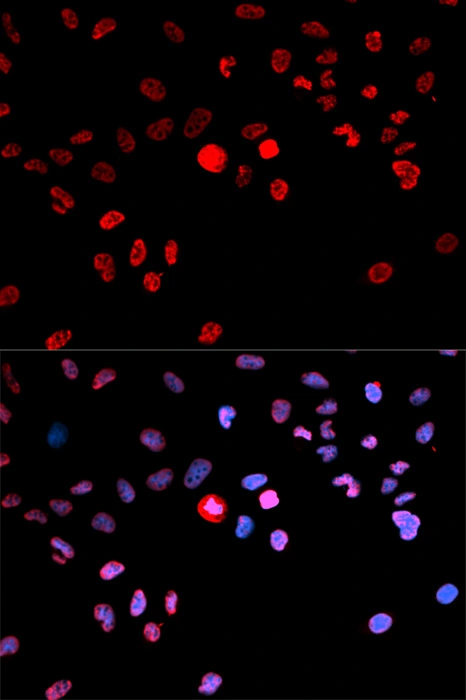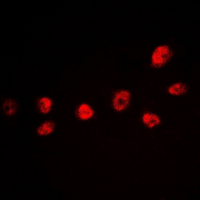CREB antibody
GTX112846
ApplicationsImmunoFluorescence, Western Blot, ImmunoCytoChemistry, ImmunoHistoChemistry, ImmunoHistoChemistry Frozen, ImmunoHistoChemistry Paraffin
Product group Antibodies
TargetCREB1
Overview
- SupplierGeneTex
- Product NameCREB antibody
- Delivery Days Customer9
- Application Supplier NoteWB: 1:500-1:3000. ICC/IF: 1:100-1:1000. IHC-P: 1:100-1:1000. IHC-Fr: 1:100-1:1000. *Optimal dilutions/concentrations should be determined by the researcher.Not tested in other applications.
- ApplicationsImmunoFluorescence, Western Blot, ImmunoCytoChemistry, ImmunoHistoChemistry, ImmunoHistoChemistry Frozen, ImmunoHistoChemistry Paraffin
- CertificationResearch Use Only
- ClonalityPolyclonal
- Concentration0.28 mg/ml
- ConjugateUnconjugated
- Gene ID1385
- Target nameCREB1
- Target descriptioncAMP responsive element binding protein 1
- Target synonymsCREB, CREB-1, cyclic AMP-responsive element-binding protein 1, active transcription factor CREB, cAMP-response element-binding protein-1, cyclic adenosine 3',5'-monophosphate response element binding protein, cyclic adenosine 3',5'-monophosphate response element-binding protein CREB, transactivator protein
- HostRabbit
- IsotypeIgG
- Protein IDP16220
- Protein NameCyclic AMP-responsive element-binding protein 1
- Scientific DescriptionThis gene encodes a transcription factor that is a member of the leucine zipper family of DNA binding proteins. This protein binds as a homodimer to the cAMP-responsive element, an octameric palindrome. The protein is phosphorylated by several protein kinases, and induces transcription of genes in response to hormonal stimulation of the cAMP pathway. Alternate splicing of this gene results in several transcript variants encoding different isoforms. [provided by RefSeq, Mar 2016]
- Storage Instruction-20°C or -80°C,2°C to 8°C
- UNSPSC12352203
References
- Hsieh YY, Du JL, Yang PM. Repositioning VU-0365114 as a novel microtubule-destabilizing agent for treating cancer and overcoming drug resistance. Mol Oncol. 2024,18(2):386-414. doi: 10.1002/1878-0261.13536Read this paper
- Su WP, Li CJ, Lin LT, et al. Boosting mitochondrial function and metabolism in aging female germ cells with dual ROCK/ROS inhibition. Biomed Pharmacother. 2023,163:114888. doi: 10.1016/j.biopha.2023.114888Read this paper
- Cardile A, Zanrè V, Campagnari R, et al. Hyperforin Elicits Cytostatic/Cytotoxic Activity in Human Melanoma Cell Lines, Inhibiting Pro-Survival NF-κB, STAT3, AP1 Transcription Factors and the Expression of Functional Proteins Involved in Mitochondrial and Cytosolic Metabolism. Int J Mol Sci. 2023,24(2). doi: 10.3390/ijms24021263Read this paper
- De Tomi E, Campagnari R, Orlandi E, et al. Upregulation of miR-34a-5p, miR-20a-3p and miR-29a-3p by Onconase in A375 Melanoma Cells Correlates with the Downregulation of Specific Onco-Proteins. Int J Mol Sci. 2022,23(3). doi: 10.3390/ijms23031647Read this paper
- Liang L, Zeng T, Zhao Y, et al. Melatonin pretreatment alleviates the long-term synaptic toxicity and dysmyelination induced by neonatal Sevoflurane exposure via MT1 receptor-mediated Wnt signaling modulation. J Pineal Res. 2021,71(4):e12771. doi: 10.1111/jpi.12771Read this paper
- Raineri A, Campagnari R, Dal Toso R, et al. 3,5-Dicaffeoylquinic Acid Lowers 3T3-L1 Mitotic Clonal Expansion and Adipocyte Differentiation by Enhancing Heme Oxygenase-1 Expression. Molecules. 2021,26(16). doi: 10.3390/molecules26165027Read this paper
- Hseu YC, Vudhya Gowrisankar Y, Wang LW, et al. The in vitro and in vivo depigmenting activity of pterostilbene through induction of autophagy in melanocytes and inhibition of UVA-irradiated α-MSH in keratinocytes via Nrf2-mediated antioxidant pathways. Redox Biol. 2021,44:102007. doi: 10.1016/j.redox.2021.102007Read this paper
- Wang YY, Chen HD, Lo S, et al. Visfatin Enhances Breast Cancer Progression through CXCL1 Induction in Tumor-Associated Macrophages. Cancers (Basel). 2020,12(12). doi: 10.3390/cancers12123526Read this paper
- Cao K, Dong YT, Xiang J, et al. The neuroprotective effects of SIRT1 in mice carrying the APP/PS1 double-transgenic mutation and in SH-SY5Y cells over-expressing human APP670/671 may involve elevated levels of α7 nicotinic acetylcholine receptors. Aging (Albany NY). 2020,12(2):1792-1807. doi: 10.18632/aging.102713Read this paper
- Torelli Hijo AH, Coutinho CP, Alba-Loureiro TC, et al. High fat diet modulates the protein content of nutrient transporters in the small intestine of mice: possible involvement of PKA and PKC activity. Heliyon. 2019,5(10):e02611. doi: 10.1016/j.heliyon.2019.e02611Read this paper

![IHC-P analysis of human bladder and rectal tissue using GTX15731 CREB antibody [LB9]. Antigen retrieval : heat induced antigen retrieval was performed using 10mM sodium citrate (pH6.0) buffer for 20 minutes. Dilution : 1:200](https://www.genetex.com/upload/website/prouct_img/normal/GTX15731/GTX15731_1033_IHC-P_w_23060620_754.webp)





![ELISA analysis of antigen using GTX60431 CREB antibody [5G3]. Red : Control antigen 100ng Purple : Antigen 10ng Green : Antigen 50ng Blue : Antigen 100ng](https://www.genetex.com/upload/website/prouct_img/normal/GTX60431/GTX60431_20170912_ELISA_w_23061123_669.webp)